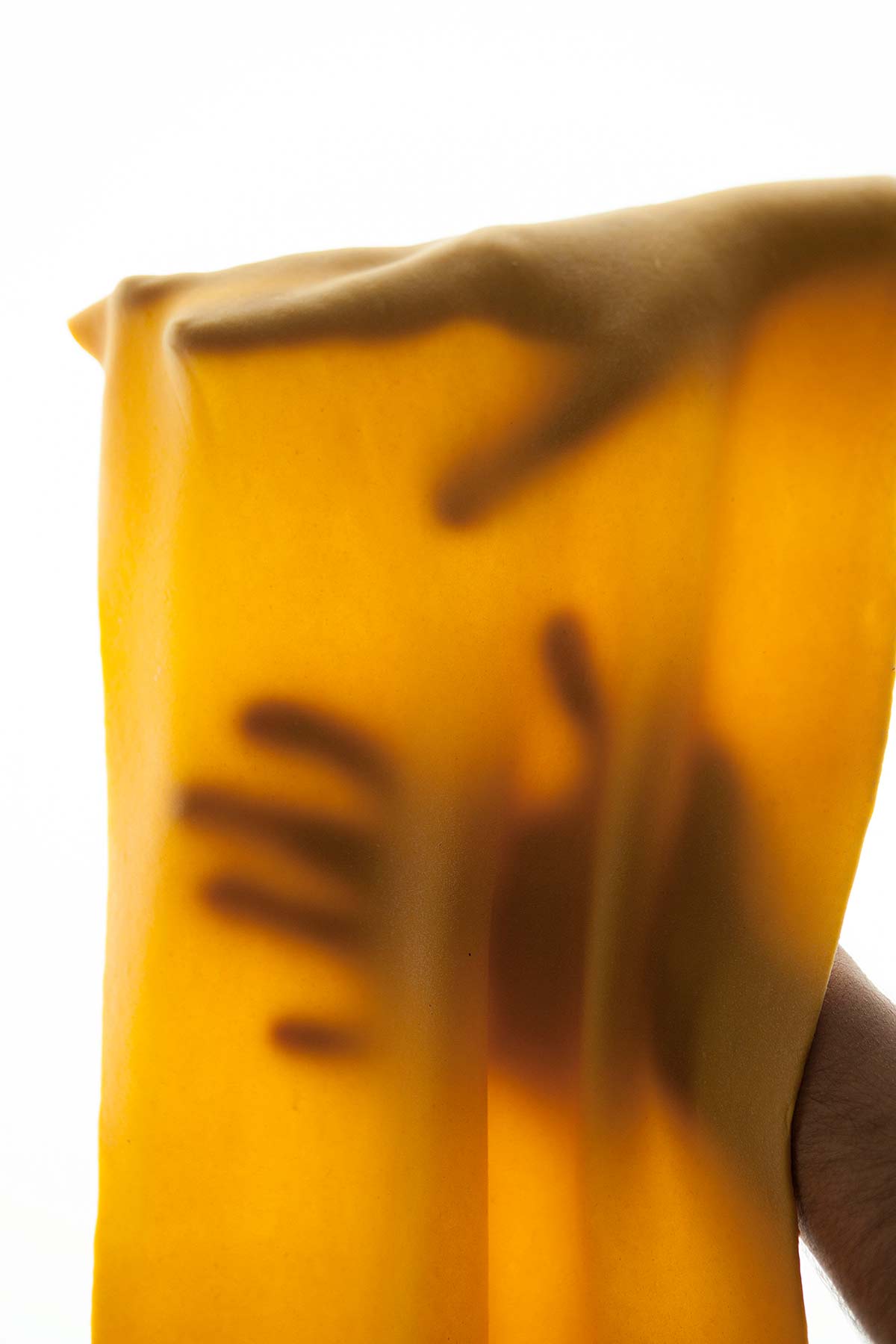
Fresh egg noodles in Italy are a gorgeous, rich golden color that is hard to replicate elsewhere. This is because of the intense red of the yolks (indeed, in Italy the yolk is referred to as il rosso, “the red”). I’m still not sure what inspired me one day to add just a little bit of pumpkin puree to my pasta dough—actually it was buttercup squash, which has sweet, dense, deep orange flesh. I happened to have some leftover in my fridge from a pumpkin cheesecake that I had made for Thanksgiving. Into the dough it went. The resulting pasta sheets were even better than I had imagined, golden in color and subtle in flavor—a perfect match for pumpkin lasagne. But you can also cut them into pappardelle or fettuccine and serve them with a simple tomato sauce.–Domenica Marchetti
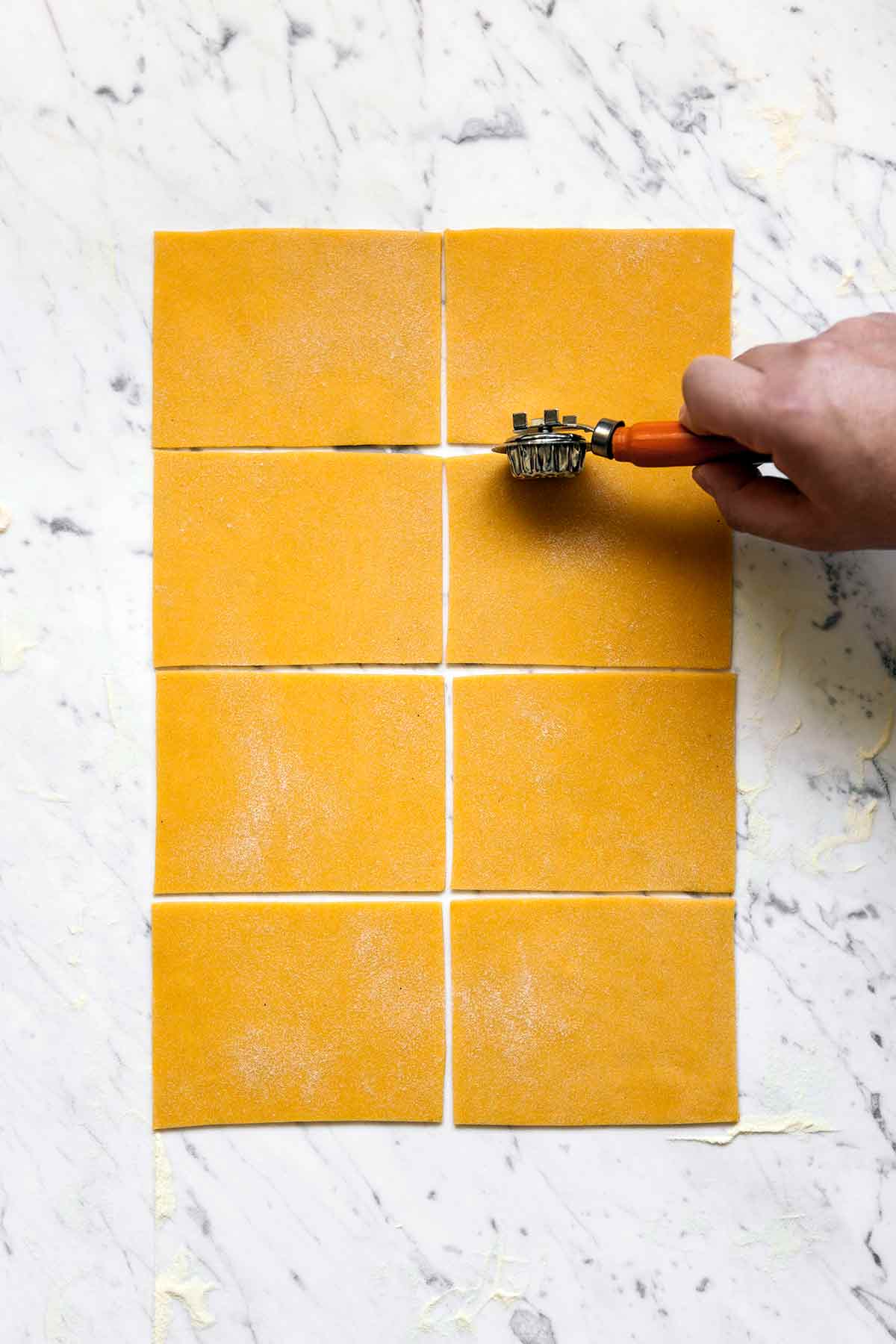
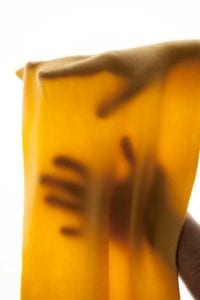
Pumpkin Pasta Dough
Ingredients
- 1/3 cup puréed cooked pumpkin or winter squash, such as buttercup or kabocha (or substitute canned pumpkin puree)
- 2 large (preferably not extra-large) eggs
- 2 to 2 1/4 cups “00” flour or unbleached all-purpose flour
- 2 tablespoons semolina flour, plus more for the work surface
- 3/4 teaspoon fine sea salt
- Pinch freshly grated nutmeg
Instructions
Make the pumpkin pasta dough
- In a small bowl, whisk together the pumpkin and 1 of the eggs.
- Add the pumpkin mixture and pulse briefly to combine. Add the remaining egg and pulse until the mixture forms crumbs that look like small curds. Pinch together a bit of the mixture and roll it around. It should form a soft ball. If the mixture seems dry, drizzle in a few droplets of water and pulse briefly. If it seems too wet and sticky, add additional flour, 1 tablespoon at a time, and pulse briefly.
- Add the remaining egg and pulse until the mixture forms crumbs that look like small curds. Pinch together a bit of the mixture and roll it around. It should form a soft ball. If the pasta dough seems dry, drizzle in a few droplets of water and pulse briefly. If the pasta dough seems wet and sticky, add additional flour, 1 tablespoon at a time, and pulse briefly.
- Turn the mixture onto a clean work surface lightly sprinkled with semolina flour and press it together with your hands to form a rough ball. Knead the dough by using the palm of your hand to push the dough gently but firmly away from you, and then fold it over toward you. Rotate the dough a quarter turn, and repeat the pushing and folding motion.
- Continue kneading for several minutes, until the dough is smooth. Form it into a ball and wrap it tightly in plastic wrap. Let the dough rest at room temperature for 30 minutes before rolling and forming it into your desired pasta shape.
Shape the pumpkin pasta dough into noodles
- [Editor’s Note: You could opt to roll the pasta dough by hand using a long wooden rolling pin, although a pasta machine makes for far less work.] Feed the blob of pasta dough through a pasta machine set on the widest setting. As the sheet of pasta dough comes out of the machine, fold it into thirds and then feed it through the rollers again, still on the widest setting. Pass the pasta through this same setting a total of 4 or 5 times. This takes the place of kneading the pasta dough and ensures the resulting pasta is silky smooth.Pass the sheet of pasta dough through the machine again, repeatedly, gradually reducing the settings, one pass at a time, until the pasta achieves the desired thickness. Your sheet of pasta dough will become quite long—if you have trouble keeping the dough from folding onto itself, cut the sheet of dough in half and feed each half through separately. Generally the second-from-last setting is best for tagliatelle and the last setting is best for ravioli and any other shapes that are to be filled. To form lasagne noodles for our pumpkin lasagna recipe, stretch the dough as thin as you comfortably can, no thicker than 1/16 inch.
- If you lift a sheet with your hand, you should be able to see the shadow of your hand through it. Because lasagne noodles are layered, they need to be very thin. Using a sharp chef’s or similar knife, cut each sheet into rectangles about 4 inches by 5 inches. Click to learn how to form any other pasta shape.
Notes
What To Do With Leftover Pumpkin Purée
If you find yourself with leftover puréed pumpkin (or other winter squash) after making this lovely pumpkin pasta dough, don’t you dare even think about throwing it away. Instead, be sneaky and stir some into your fave mac-n-cheese. It’ll bring an ever so subtle sweetness to your dinner—along with some stealthy potassium and vitamins A and C.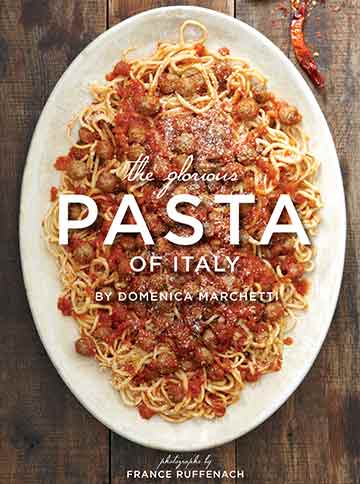
Nutrition
Nutrition information is automatically calculated, so should only be used as an approximation.
Recipe Testers’ Reviews
We almost always make our own pasta and this dough is another delightful recipe to add to our collection. I used canned pumpkin puree and large eggs so it only took 2 cups all-purpose flour. I cut the dough into wide noodles and served it with a sage cream sauce. Next time I want to make ravioli, so now I’m on a mission to find the right filling.
I’m fairly new to making my own pasta and still struggle with a delicate dough. This dough, however, is so easy to work with that I was surprised how quickly it came together. The addition of the squash gave the pasta a brilliant warm shade of yellow and just a touch of sweetness.
Once I had run the first ball through the machine, I decided to make ravioli instead. I did keep enough of the dough to make a single serving of pappardelle, just for the sake of taste testing. I used 00 flour and 2 large eggs along with pureed butternut squash. I found that the dough didn’t need any water added to it; after a few pulses in the food processor, it came together easily. I spent some time kneading until it was silken and elastic before wrapping and letting it rest.
I had originally thought about just making a quick sauce and cutting the dough into simple, rustic pappardelle. I tried the pappardelle with a good olive oil and a sprinkle of sea salt and found the flavor to be mild with a hint of pumpkin.
The biggest appeal of this dough was, for me, the texture and malleability. It was dead simple to roll out and form into ravioli. I filled them with sausage, blue cheese, and the leftover pureed squash. They boiled up beautifully, keeping their shape and beautiful color. I was able to make 18 medium ravioli along with a decent-sized bowl of sneaky “testing” pappardelle.
It’s been many years since I’ve made fresh homemade pasta, but this pumpkin pasta dough made me remember how delicious, gratifying, and easy it is. I happened to have both 00 and semolina on hand which made a beautifully silky and supple dough.
I added about 2 teaspoons of water in droplets as I was pulsing the dough in the food processor (which took less than 3 minutes), and at that point I THOUGHT I had added enough water, but when I started to knead the dough I realized it was still too dry. I could tell because it not only looked dry but would tear a bit when I pushed the dough with the heel of my hand. So I just wet my hands and continued to knead until the dough took the water in. I had to do that twice and after that I could feel that the dough was just about right; no dry spots but not at all sticky. It had a texture similar to Play-Doh, but maybe slightly stiffer.
After letting it rest for 30 minutes I cut it into 4 pieces and cranked it through my Acme pasta roller. I started it on #1 and went consecutively to #5. Then I put each long ribbon through the tagliatelle roller cutter. I rigged up a drying rack made of two cooling racks teepeed together on a half sheet pan. I let the pasta dry for about 30 minutes and then quickly cooked it in generously salted boiling water for 1 minute. I tossed the hot pasta along with some of the pasta water with a quick sauce made from butter, mascarpone, white wine, a splash of stock, chives, and sage. Topped it with some fresh pepper and grated Reggiano. SOOOOO DANG GOOOOD! And somehow I’m not even in that much of a pasta coma right now (even though I ate 3 of the 4 servings it made!)
I saved one dried serving (tossed with a bit of semolina) to see how it holds up in the fridge. I cooked the leftover portion two days after originally making it and it held up beautifully and cooked up perfectly well!
But wow, was this pasta an absolute delight! Next time when my picky daughter isn’t around to object, I will make a creamy pumpkin sage sauce to go with it to amp up the autumn flavors. And maybe a crumble of blue cheese and some chopped toasted walnuts or hazelnuts over the top as well!
I used canned Libby’s pumpkin puree and 00 instead of AP flour. I used 2 large eggs, not extra large and I’m glad I did, because xl eggs would have made it too sticky. I liked the option of adding water until it was the right level of moistness, rather than adding more flour to tamp down the stickiness. A good trick for LIGHTLY dusting any work surface with flour is to tap a fine mesh strainer rather than scattering with your hand. I added 2.5 teaspoons of water while pulsing, then twice generously wet my hands while kneading. I made tagliatelle. I got 4 servings as a main course, but it could stretch to 6 servings as a first course.
Coming into fall with all the pumpkin and other winter squash varieties available, I often have run through how a pumpkin-flavored noodle could play with sauces, even though I am a pasta novice. This was an easy recipe to try out my ideas, scaled to a batch I could work with, and in fact I divided the dough into two different projects.
The dough is forgiving enough that you can refrigerate it overnight, although it might need a little more flour the next day, it actually behaved quite well. The dough came together with very little fuss, just a few pulses. I discovered I did not have semolina on hand, but a little research suggested a higher protein flour and I had some that met that spec just perfectly for the extra 2 tablespoons plus dusting.
Since this overall was a small batch, I tried rolling it by hand instead of digging out my pasta roller (also, where is it?). It’s a good workout and the more space and the more comfortable height counter or table you have, the better. I aimed for translucent and about 1/16 inch or so thickness. It wasn’t beautiful, but I managed to use all the dough.
The first night, I made a small batch of ravioli with a pumpkin ricotta filling and gently cooked them (5 to 7 minutes) and then made a brown butter sage sauce and added some pumpkin towards the end which transformed it. It also was a great excuse to use sage which I have a bumper crop of and it begs to be included anywhere I can justify some crisped leaves.
I think the more flavorful the pumpkin or squash you use, the more interesting the pasta will be, but to dip into trying a homemade pasta project, you should feel completely okay about using a can of pumpkin puree. I planned the two meals utilizing the remainder of the puree so none went wasted or wanting for work. This also means if you have EXTRA freshly roasted squash, you now have an easy way to use up that last 1/3 cup in a delicious manner.
For future batches, I plan to pair the pumpkin pasta with either a spicy Italian sausage based sauce or maybe artichokes, so the sweetness comes thru as well as contrasting and more complex flavors.
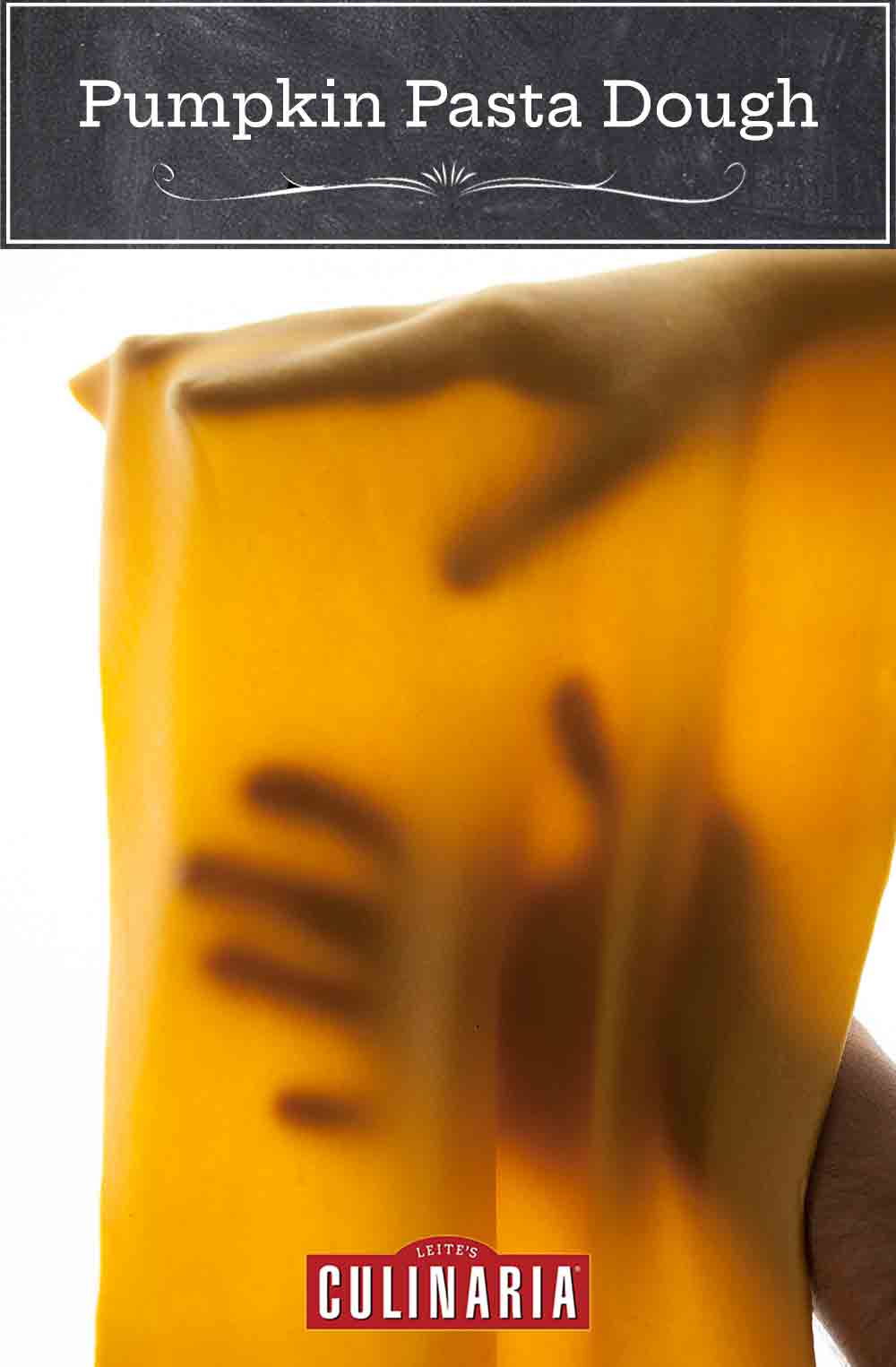
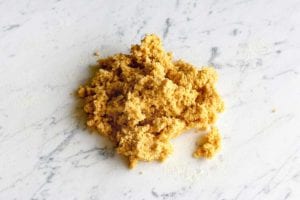
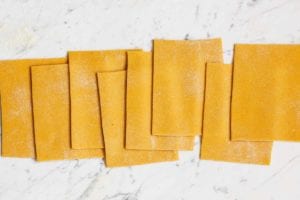













Timely question….how long ahead of time can I make this dough? Can I make today and roll out tomorrow?
Andres, you sure can. That’s not a problem.
This almost makes me want to get married, so that I can impress him with my pasta making skills. Almost. I’m thinking a sauce involving tasso ham is in order.
Tasso ham? Marry me!
I tried this last night! It was excellent! In fact it was a pumpkin theme night, I used the leftover purée (I also made muffins) in a sauce to cover the noodles. I sautéed onions, peppers, tomatoes, and garlic in some bacon fat, dumped the rest of the purée over that, thinned it out with some Riesling and cream and topped it with ham. Went perfect with the pumpkin noodles! One change I made was that I just used all-purpose flour, couldn’t get anything fancy. Thanks for the recipe!
You’re quite welcome, Chris. Domenica certainly knows her pasta, doesn’t she?! I hope you have a little pumpkin purée leftover, as we have a similarly themed recipe next week that you may want to try…